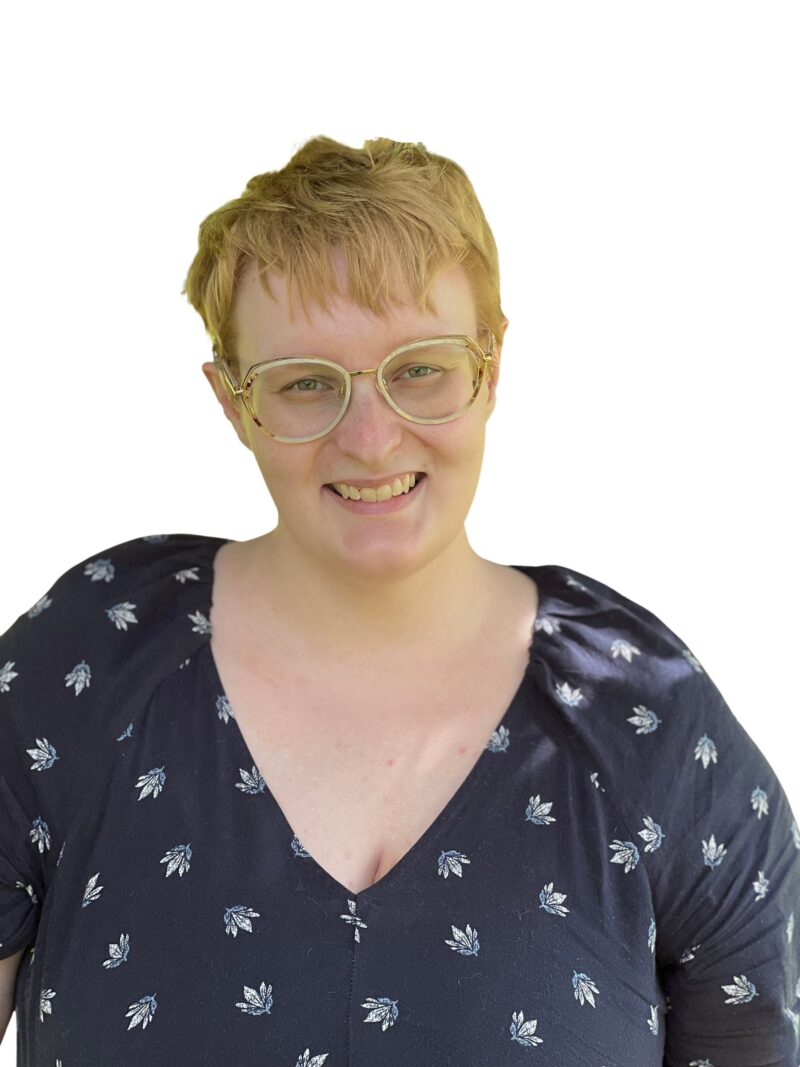
Table of Contents
Is It Just Sadness, or Could It Be Depression?
Written By: Charlie Health Editorial Team

Clinically Reviewed By: Courtney Way
May 15, 2025
7 min.
Learn how to tell the difference between sadness and depression, when to seek treatment, and what types of help can support your recovery from either.
Learn more about our Clinical Review Process
Table of Contents
Everyone experiences sadness. It’s a normal part of being human, often triggered by stress, loss, or disappointment. But what happens when that sadness doesn’t go away? When it starts to affect your energy, thoughts, sleep, or sense of self, it could be a sign of something deeper, like clinical depression or another mood disorder. Read on to learn more about how to recognize the difference between everyday sadness and a depressive disorder, as well as how to get the right kind of help for either condition.

If sadness is weighing you down longer than usual, don’t wait to reach out for support
With Charlie Health, recovery from depression is possible, and help is just a call or click away.
The key differences between sadness and depression
While the lines can be blurry, there are key signs to watch for when trying to differentiate between sadness and depression.
1. Duration
Sadness is typically situational and temporary. You might feel down after a tough week or an emotional event, but you can still experience moments of relief or connection. Depression, on the other hand, is a persistent mental health disorder that affects how you think, feel, and function.
2. Symptoms
Sadness is often triggered by specific events and usually comes and goes without severely impacting daily functioning. By contrast, even mild depression can lead to physical symptoms like fatigue, appetite changes, and disrupted sleep. More severe forms, like major depressive disorder, can involve suicidal thoughts, emotional numbness, or deep hopelessness.
3. Treatment
While sadness often improves on its own with time and self-care, depression typically requires more focused treatment. This can include therapy, medication such as antidepressants, lifestyle adjustments like regular exercise and healthy sleep habits, and strong social support.
Subtle signs of depression you might miss
Not all depression symptoms are loud or dramatic. In fact, some of the most telling signs are quiet and easily mistaken for everyday stress or tiredness:
- Emotional numbness or chronic low mood
- Persistent fatigue, even after rest or not being able to sleep at all
- Changes in eating or sleeping habits
- Irritability or unexplained guilt
- Difficulty concentrating or remembering things
- Pulling away from friends, even when feeling lonely

These may point to mild depression, persistent depressive disorder, or even seasonal affective disorder, forms of depression that can affect day-to-day functioning in subtle but powerful ways.
If your feelings of sadness last for more than two weeks, begin to affect your daily life or lead to thoughts of suicide, it’s time to talk to a mental health professional. Depression isn’t a character flaw or weakness; it’s a mental illness, and it’s treatable. If you or someone you love is in crisis, contact the Suicide & Crisis Lifeline at 988 for free, confidential support 24/7.
Sadness vs. depression: practical examples
So, how can you tell the difference in real life? Here’s how depression and sadness often show up in everyday situations and what to look for when you’re trying to tell them apart.
1. After a breakup: heartbreak or clinical depression?
Sadness after a breakup is expected. You might cry, text your friends, listen to melancholy songs, or binge your comfort show. Over time, that feeling fades as you begin to move forward with your life. But depression can twist that same event into something much heavier. Someone experiencing clinical depression may feel stuck in a loop of self-blame and hopelessness, which, unlike sadness, doesn’t go away with time. Weeks go by, and the sadness doesn’t lift. They might stop responding to messages, feel numb instead of tearful, or believe they’ll never be lovable again. That’s more than sadness—it’s a symptom of a potential mood disorder.
2. A bad day at work: normal stress or depressive symptoms?
Everyone gets overwhelmed at work or school. A rough day may trigger irritability, stress, or a temporary slump in mood. But for someone experiencing a depressive episode, even small setbacks can reinforce negative thoughts like “I’m worthless” or “nothing will ever get better.” These thoughts can happen without depression as well, but an ongoing, persistent set of thoughts that interfere with focus and performance could signal major depressive disorder.
3. A quiet weekend: recharging or emotional withdrawal?
Spending the weekend alone can be restorative. People may feel a little lonely but still find comfort in rest or routine. However, for someone with depression, that same downtime can feel unbearable. Even activities they once loved no longer bring pleasure. This experience, known as anhedonia, is a core symptom of many mood disorders. It’s not just boredom; it’s a deep disconnection from joy itself. The person might scroll aimlessly, start and abandon hobbies, or spend hours staring at the ceiling. These signs often appear in mild depression, seasonal affective disorder, or perinatal depression. They may want to feel better but can’t remember what feeling better ever felt like.
4. Rejection: disappointment or distorted self-worth?
Everyone faces rejection, whether it’s not getting a job or feeling left out socially. It stings, but most people can shake it off with time or reassurance. In someone with depression, rejection hits differently. A simple “no” can trigger a cascade of negative thoughts: I’m not good enough. Everyone is better than me. Why do I even try? These beliefs often stem from low self-esteem that’s been shaped by weeks, months, or even years of self-doubt. Instead of viewing the event as isolated, it reinforces a broader, more painful narrative about who they are and what they’re worth. These feelings can also happen to people with other conditions.
5. Waking up in the morning: groggy or emotionally paralyzed?
We all have mornings where we hit snooze too many times. But the first 30 minutes of the day can look very different for someone with clinical depression. They might wake up already feeling exhausted, even after a full night of sleep. Their mind starts racing with dread – I can’t do this today. Physically, their body may feel heavy, almost like gravity has increased. Instead of getting up to shower or eat, they may lie in bed staring at the ceiling, scrolling their phone without taking anything in or drifting in and out of sleep in an effort to delay the day. Tasks like brushing your teeth or checking emails feel overwhelming. This paralysis isn’t laziness; it’s one of the clearest physical symptoms of depression, and it often goes unnoticed or misunderstood.
Impact of untreated depression
The consequences of undiagnosed and untreated depression are profound. People may experience worsening symptoms, including persistent low mood, fatigue, and a diminished ability to find joy in life. Over time, untreated depression can disrupt both mental and physical health in serious ways. Longitudinal research has shown that major depressive disorder (MDD) increases the risk of cardiovascular disease by approximately 80%, likely due to a combination of unhealthy lifestyle behaviors (such as smoking, poor diet, and physical inactivity) and biological disturbances, including cardiac dysregulation, metabolic issues, and immune system inflammation. Depression also frequently co-occurs with substance use disorders.
Research found that nearly one-third of people with MDD meet the criteria for both. This comorbidity is associated with higher suicide risk, more severe social and personal impairment, and greater treatment complexity. Unfortunately, despite the evidence supporting integrated treatment approaches, many people with overlapping depressive and substance use disorders remain undiagnosed or undertreated.
When to seek treatment and how to choose the right kind
Recognizing when sadness becomes something more serious is key to getting the help that can lead to recovery and improved well-being. If you’re feeling low most of the day, nearly every day, for more than two weeks, or if that sadness is accompanied by symptoms like irritability, loss of interest, or negative thoughts about yourself or your future, it may be time to talk to a mental health professional.
Depression is a treatable condition, and many people find relief through a combination of approaches tailored to their needs. Early treatment can prevent symptoms from worsening and improve overall well-being. Understanding the common treatment options can help you or a loved one take the first steps toward recovery.
- Therapy, including cognitive behavioral therapy (CBT)
- Antidepressant medication
- Self-care
Working with a healthcare provider to create a personalized plan is key to finding what works best. With the right treatment and support, most people with depression can recover and lead fulfilling lives.

How Charlie Health can help
If you or a loved one are struggling with depression, Charlie Health is here to help. Charlie Health’s virtual Intensive Outpatient Program (IOP) provides mental health, substance use, and eating disorder treatment for people dealing with serious conditions, including depression. Our expert clinicians incorporate evidence-based therapies into individual counseling, family therapy, and group sessions. With support, managing your mental health and healing from depression and sadness is possible. Fill out the form below or give us a call to start healing today.
References
https://pubmed.ncbi.nlm.nih.gov/18281835/
https://www.sciencedirect.com/science/article/abs/pii/S0149763415303559?via%3Dihub




